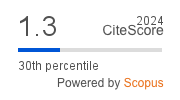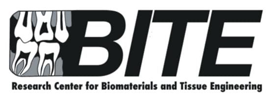Morphological changes of alveolar bone due to orthodontic movement of maxillary and mandibulary incisors
Vol. 41 No. 1 (2008): March 2008
Articles
March 1, 2008
Downloads
Pudyani, P. S., Sutantyo, D., & Suparwitri, S. (2008). Morphological changes of alveolar bone due to orthodontic movement of maxillary and mandibulary incisors. Dental Journal (Majalah Kedokteran Gigi), 41(1), 21–24. https://doi.org/10.20473/j.djmkg.v41.i1.p21-24
Downloads
Download data is not yet available.
- Every manuscript submitted to must observe the policy and terms set by the Dental Journal (Majalah Kedokteran Gigi).
- Publication rights to manuscript content published by the Dental Journal (Majalah Kedokteran Gigi) is owned by the journal with the consent and approval of the author(s) concerned.
- Full texts of electronically published manuscripts can be accessed free of charge and used according to the license shown below.
- The Dental Journal (Majalah Kedokteran Gigi) is licensed under a Creative Commons Attribution-ShareAlike 4.0 International License

















